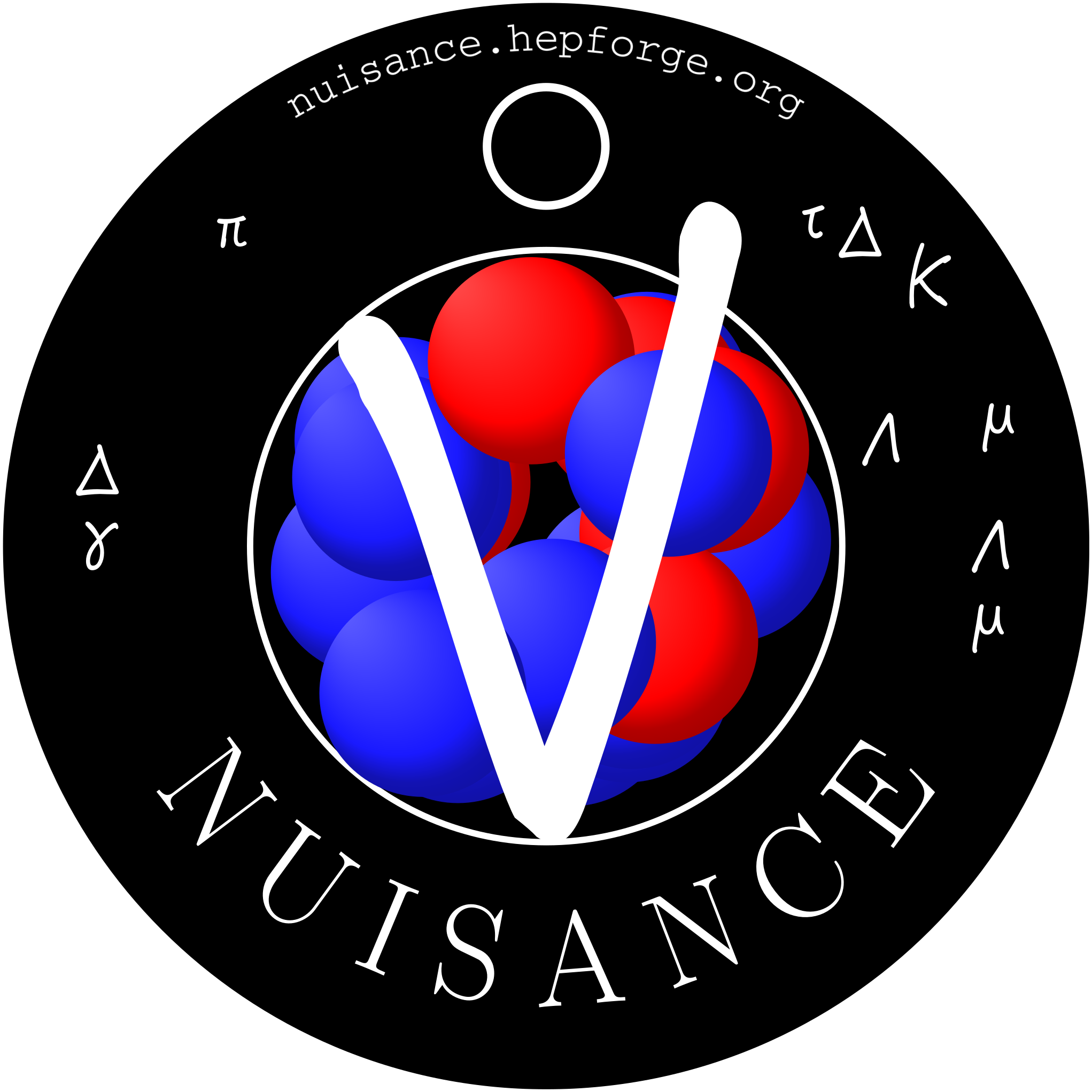close
Warning:
Can't synchronize with repository "(default)" ("(default)" is not readable or not a Git repository.). Look in the Trac log for more information.
- Timestamp:
-
Oct 27, 2016, 11:28:38 AM (8 years ago)
- Author:
-
Clarence Wret
- Comment:
-
--
Legend:
- Unmodified
- Added
- Removed
- Modified
-
|
v54
|
v55
|
|
| 5 | 5 | A wikipage to list the experiment fluxes and where to find them in papers |
| 6 | 6 | |
| 7 | | '''Comments:''' some experiments determined fluxes solely by simulating the beamline and target interaction; others added muon monitors to provide additional flux information; others fitted selected events (often CCQE) and then used that to go to a flux, sometimes without providing information on how accurate the simulation was. In the best cases, all these methods are combined and compared and the differences is an estimate of the flux error. This was not always the case though and the neutrino fluxes should always be taken with a pinch of salt. |
| | 7 | '''Comments and word of caution:''' flux simulation is hard work and it is known that the flux uncertainties from early bubble chamber experiments were under-estimated. |
| 8 | 8 | |
| 9 | | '''Beware of experiments using only CCQE events to estimate the neutrino flux:''' In attempting to resolve the CC1pi+1p cross-section discrepancy between ANL and BNL, Wilkinson and Rodrigues (arxiv:1411.4482v1) corrected the CC1pi+ cross-section by using the CC1pi+/CCQE ratio and multiplying it by the CCQE cross-section in GENIE. The CC1pi+/CCQE ratio should cancel most of the flux uncertainties, and so provides an estimate of how accurate the flux estimate was. Note the CC1pi+/CCQE ratio agrees well between ANL and BNL. W&R found that the BNL total cross-section correction was large compared to ANL. BNL used a MA_CCQE fit to CCQE events to estimate their flux, which assumes an understood CCQE interaction model and an understanding of deuterium effects, whereas ANL ''seem'' to have used a more sophisticated simulation and a fit. |
| | 9 | Some experiments determine fluxes solely by simulating the beamline, target interaction and subsequent meson decays; others add in muon monitors after the target to provide additional flux information; others fit selected events (often CCQE) and assume perfect modelling to go from an event rate to a flux. Many experiments have used all these methods to get realistic flux uncertainties, others haven't. Historical neutrino fluxes should always be taken with a pinch of salt. |
| | 10 | |
| | 11 | '''Beware of experiments using only CCQE events to estimate the neutrino flux:''' In attempting to resolve the CC1pi+1p cross-section discrepancy between ANL and BNL, Wilkinson and Rodrigues (arXiv:1411.4482v1) corrected the CC1pi+1p cross-section by using the experiments' CC1pi+1p/CCQE ratio and multiplying it by the CCQE cross-section in GENIE. The CC1pi+1p/CCQE ratio should cancel most of the flux uncertainties, and so comparing the (CC1pi+1p/CCQE)*(GENIE CCQE) cross-section to the reported CC1pi+1p cross-section could provide an estimate of how accurate the flux calculation was at the experiment. Note the CC1pi+/CCQE ratio agrees well between ANL and BNL. |
| | 12 | |
| | 13 | W&R found that the BNL total cross-section correction was large compared to ANL. BNL used a MA_CCQE fit to CCQE events to estimate their flux, which assumes an understood CCQE interaction model and an understanding of deuterium effects, whereas ANL ''seem'' to have used a more sophisticated simulation and a fit. |
| | 14 | |
| | 15 | Graczyk & Sobczyk (arXiv:0908.2175) and others have resolved the problem in similar ways, often introducing a varying normalisation parameter to the ANL and BNL cross-section distributions separately. Additionally,the normalisation parameters can be correlated between the experiments. This approach does not allow for shape changes in the cross-section, which Wilkinson & Rodrigues does. |
| 10 | 16 | |
| 11 | 17 | |
